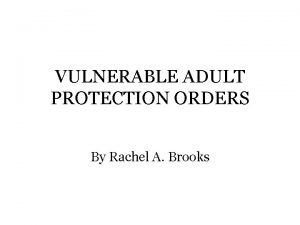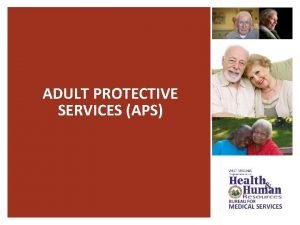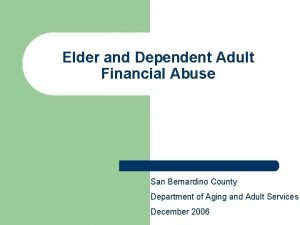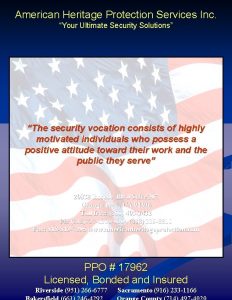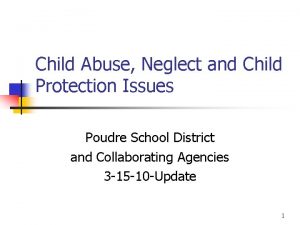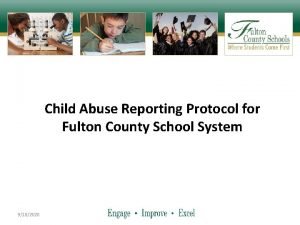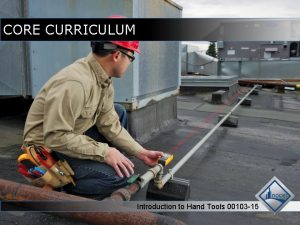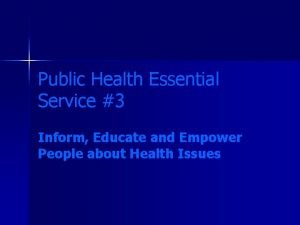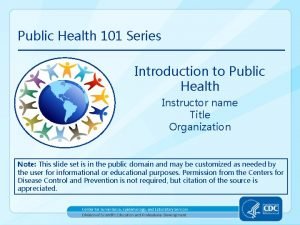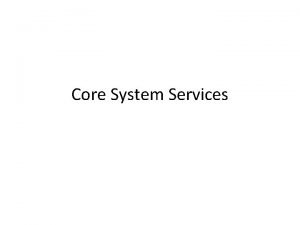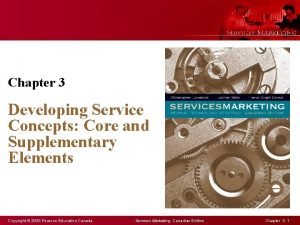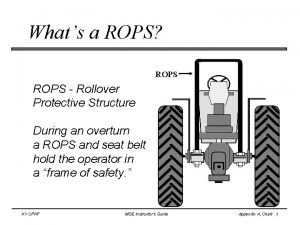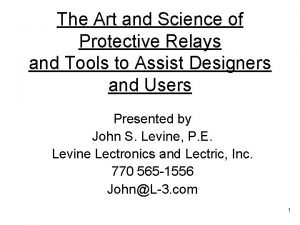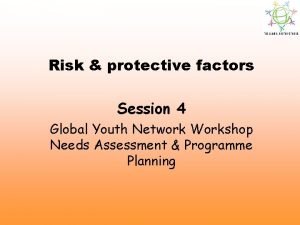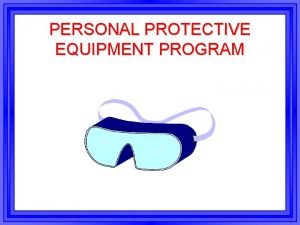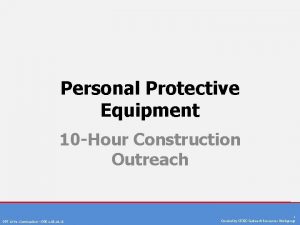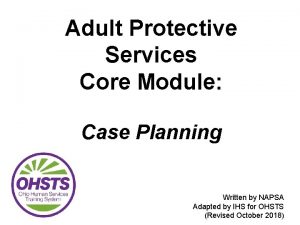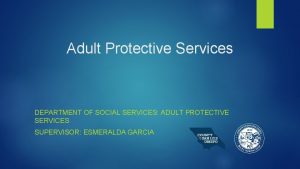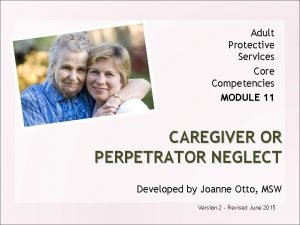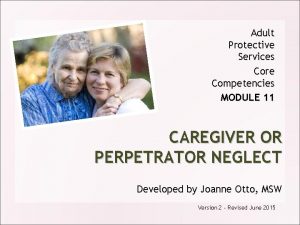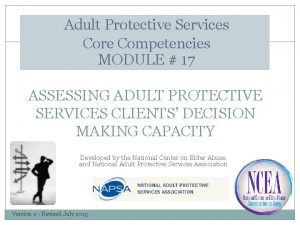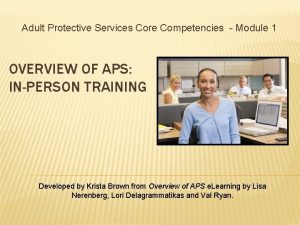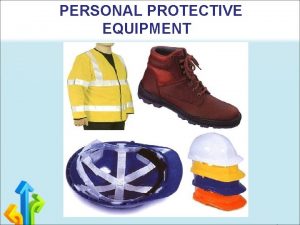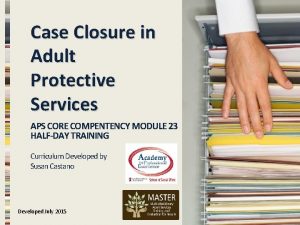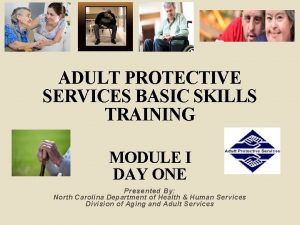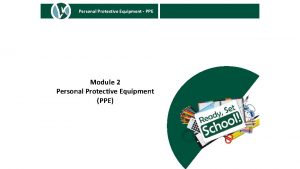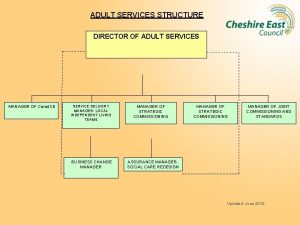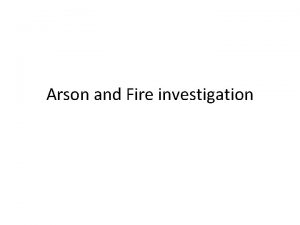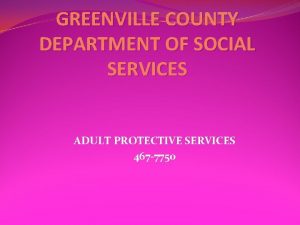Adult Protective Services Core Module Initial Investigation Written























































- Slides: 55

Adult Protective Services Core Module: Initial Investigation Written by NAPSA Adapted by IHS for OHSTS (Revised September 2017)

LEARNING OBJECTIVES Define intake and describe the goal of the intake process Describe the S. T. O. R. Y. approach and its use in the intake process Understand methods for preparing for the initial visit and rapport building strategies when working with older adults Describe interviewing strategies when working with alleged perpetrators Describe how to assess potentially dangerous situations in order to remain safe and discuss ways to deescalate these situations

HOW IS INTAKE DONE IN YOUR AGENCY? Who takes initial call? Where does that information go? How do cases get assigned? What happens next?

WHAT IS INTAKE? Intake is the gathering of sufficient information to determine if an investigation is required including: Locating identified individual Indicating how emergent the needs may be Quality of intake may determine success of initial visit

SCREENING DECISION

ROLE OF THE INTAKE WORKER Educator Communicator Clarifier Service Broker Ambassador

Empathy Patience and perseverance Listening Questioning Clear, nonthreatening communication

GETTING THE S. T. O. R. Y

SPECIFICS Names, ages Address, directions Known disabilities Environment concerns Safety issues

Details of the allegation How long has it been going on, why report now? Who, what, where, when, why? TALE

OTHERS Family, friends, support system Medical/mental health providers Other service providers

REFERRING PARTY Making a positive connection with the referent will help the older adult, worker, and the agency in many ways.

Screening decision Discuss expectations Explain role and responsibilities

S. T. O. R. Y. ACTIVITY

PREPARING FOR THE INITIAL VISIT

Prior History • Records • Service history

Cultural Awareness • Values • Traditions • Customs

Access • Mobility • Environment

Visit Type • Announced • Unannounced • Location

SAFETY CONSIDERATIONS

SAFETY CONSIDERATIONS Before the Visit Review files to determine risks Know agency protocols Think through scenarios and outcomes Consult with a supervisor, if needed

SAFETY CONSIDERATIONS During Make a plan of action for entering and exiting the Visit Be aware of who is in the home Trust your intuition

REDUCING SAFETY RISKS

SCHEDULING üGo early in the day üSchedule challenging case first ü Know perpetrator’s schedule ü Know when providers are at the home ü Know older adult’s schedule

COMMUNICATION Leave your schedule with coworkers Discuss emergency signal plan with supervisor Have emergency numbers available Keep in touch with your intuition

CAR AND TRAVEL Use county car when possible Avoid wandering on foot through neighborhoods Choose a safe path to your car Lock valuables in the trunk If you think you are being followed, drive to the police station

PERSONAL SAFETY üCell phone üDress practically and sensibly üKeep hands free üMaintain a low profile

INVOLVING LAW ENFORCEMENT Pros Cons

GROUP ACTIVITYINTRODUCTIONS

QUESTIONS As the worker, how did it feel to be met with resistance? As the older adult, how did it feel to have a stranger come to the door? How did you (the worker) identify yourself? Did you show an ID? What kind of opening statement did you have? How did you (the older adult) respond to the introduction? Was there anything the worker could have done differently?

BUILDING RAPPORT TIPS Respect Professionalism Communication Strategies

GAINING ACCESS Bring “sense-ability” to the door • Vision • Hearing • Smell • Touch e h “T ” s Do

GAINING ACCESS Communication Techniques • Active listening • Open-ended questions • Demonstrate empathy

GAINING ACCESS Do not…. • Bombard • Assume • Patronize • Be a hero e h “T s” t ’ n Do

BEWARE & BE AWARE “The “She older offered adult me “The older adult speaks “I got out my binder “He refused to help “He wouldn’t even “So I told her that Consider the “The place was soa only Polish so I found coffee didn’t but seem I told toher and started writing his wife…said look me in the eye. her son was no good woman who was dirty I was grossed we understand were not allowed that everything she told following cleaning the apartment and she afraid should just out and to sit cooking was I know he isn’t much tome accept English anything so I next door and asked her and she got so down. ” kick him out. ” examples… to translate. ” woman’s work. ” telling the truth. ” had from to upset. ” really clients. ” yell. ”

DEALING WITH RESISTANCE Why would an older adult be resistant? • Fear • Anger • Suspicion • Previous negative experience

DEALING WITH RESISTANCE Be aware of possible causes • • • Allow older adult to vent Manage your own feelings Use communication skills Clarify concerns Be as flexible as possible Remember, you are in their home

IF YOU ARE REFUSED ACCESS Determine emergent need • • Medical Mental health Law enforcement Ex parte emergency protective services order, or court order for APS Return at another time Return with an ally

INTERVIEWING THE ALLEGED PERPETRATOR Build rapport Anticipate emotional state Do not prejudge Be aware of your own feelings and attitudes Think about questions

e h “T ” s Do Interviewing the Alleged Perpetrator • Pleasant, even tone • Open-ended questions • Keep safe distance • Focus on the older adult • Start slowly and generally

INTERVIEWING THE ALLEGED PERPETRATOR “We received a “Your husband told me “My job is to investigate “The law states that we “Your mother says Consider the “Iallegations understand you’ve of abuse, you hit him with your report that said you need to see your that you don’t shop been leaving your neglect, and exploitation cane. The poor mother. If you don’t are living off your following of elderly people. Are mother alone at night defenseless man is in for her and she is cooperate, I’ll come mother’s social you the one caring for while you go to the a wheelchair. How can examples… always hungry. ” your mother? ” back with the bar. ” security checks. ” you do such police. ” a thing? ”

e h “T s” t ’ n Do Interviewing the Alleged Perpetrator • Don’t get “overofficial” • Don’t use emotionally charged words • Don’t make assumptions • Don’t patronize or manipulate • Don’t put down

POTENTIAL DANGER

BEHAVIORS ASSOCIATED WITH DANGER Prior Violence Internal Feelings Physical Factors Situational Factors Forced Removal

General observations Physical observations Verbal observations Reaction changes, triggering events

PREVENTING DANGEROUS SITUATIONS Attitude Communication Skills Listening Skills Gut Reactions

YOUR ATTITUDE Be aware of personal reactions Display courtesy and politeness Remain impartial Be openminded and problem solving Remain calm and confident Respect personal space

YOUR LISTENING SKILLS Keep your non-verbal cues non-threatening Be sensitive to cultural differences Attend to feelings; be empathetic Slow down Speak quietly Use active listening

YOUR COMMUNICATION SKILLS Ask permission Don’t interrogate Validate feelings Don’t make promises you can’t keep Clarify messages Ask reflective questions Avoid power struggles

YOUR GUT REACTION Be aware of your own anxiety Be sensitive to warning signs Know when to stop Know when to leave

DE-ESCALATION TIPS General Actions Verbal Actions Physical Actions • Model calm behavior • Be sensitive • Remain selfconfident • Show respect • Interpret behavior cautiously • Offer choices • Nonthreatening • Avoid physical closeness • Reduce eye contact

EXITING Try to remain calm Leaving is a viable and professional choice Leave if you feel threatened Review options and choose the best one Stay aware, even if situation seems to be stabilizing

Case Vignette

QUESTIONS What safety assessment observations are available to you, the worker? (Red Flags) What "gut reactions" are you experiencing? What verbal, physical, or general actions or rapport building communication will you engage in? What adjustments might you make to your attitude, body language, listening, and communication style to try to calm the situation? Are you considering an alternative safety plan, if needed? What pre-visit safety planning activities might reduce risk in this situation?

 Rachel brooks attorney vancouver wa
Rachel brooks attorney vancouver wa Sacramento county adult protective services
Sacramento county adult protective services West virginia adult protective services
West virginia adult protective services Delaware county jfs
Delaware county jfs Heap westchester county
Heap westchester county San bernardino financial elder abuse lawyer
San bernardino financial elder abuse lawyer System planning and initial investigation
System planning and initial investigation Caldwell county social services
Caldwell county social services Dfw security protective force jobs
Dfw security protective force jobs Ultimate protection security services
Ultimate protection security services Pasco child protective services
Pasco child protective services Integrated protective services
Integrated protective services Larimer county child protective services
Larimer county child protective services Lorain county child protective services
Lorain county child protective services Georgia dfcs investigation protocol
Georgia dfcs investigation protocol Dss rowan county
Dss rowan county C device module module 1
C device module module 1 00103-15
00103-15 The brittle, rocky outer layer of earth
The brittle, rocky outer layer of earth The crust the mantle and the core
The crust the mantle and the core Crust outer core inner core mantle
Crust outer core inner core mantle Core rigidity
Core rigidity Personal finance module
Personal finance module Core functions and essential services of public health
Core functions and essential services of public health Public health 101 series
Public health 101 series Core system services
Core system services Compute storage network
Compute storage network Core product and supplementary services
Core product and supplementary services Aws
Aws Core and supplementary services examples
Core and supplementary services examples Integrated services vs differentiated services
Integrated services vs differentiated services Wake county human services community services center
Wake county human services community services center Rops safety
Rops safety Reverse covered call
Reverse covered call Two skin protective agents
Two skin protective agents Protective ozone layer
Protective ozone layer Art and science of protective relaying
Art and science of protective relaying Flower basics
Flower basics Personal protective factor
Personal protective factor Protective monitoring
Protective monitoring Protective custom choice ul
Protective custom choice ul Plumbing ppe
Plumbing ppe Ppe program
Ppe program Special protective equipment used in firefighting except
Special protective equipment used in firefighting except Who is responsible for providing specialized work footwear?
Who is responsible for providing specialized work footwear? Protective ozone layer
Protective ozone layer Protective ozone layer
Protective ozone layer Broncheols
Broncheols Tn-c earthing system
Tn-c earthing system Protective packaging and materials handling
Protective packaging and materials handling Tyndall effect is an optical property.
Tyndall effect is an optical property. Lyophilic colloids
Lyophilic colloids Colloidal state definition
Colloidal state definition Chapter 36 emergency preparedness and protective practices
Chapter 36 emergency preparedness and protective practices Personal protective equipment for smaw
Personal protective equipment for smaw Protective packaging and materials handling
Protective packaging and materials handling
